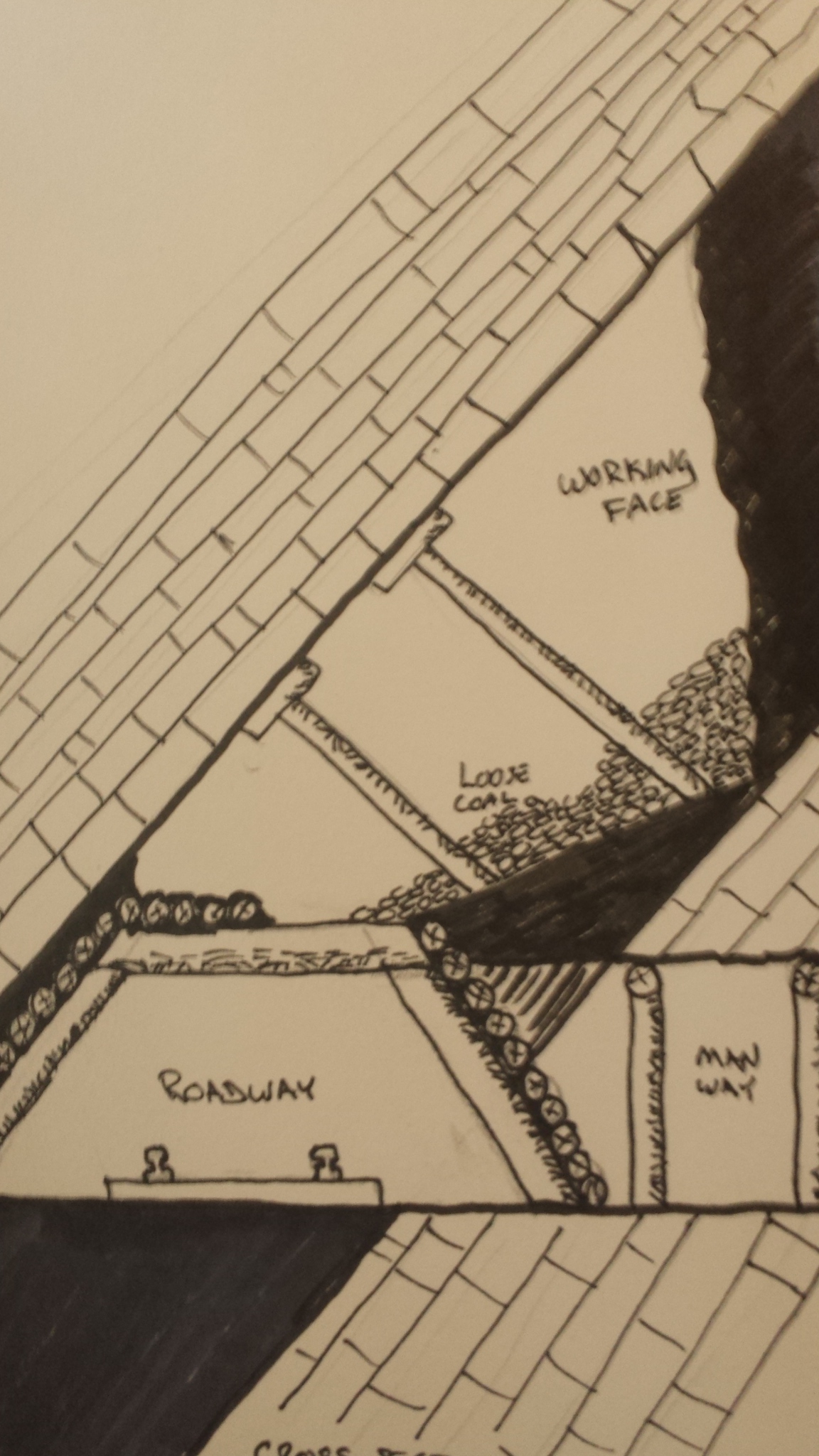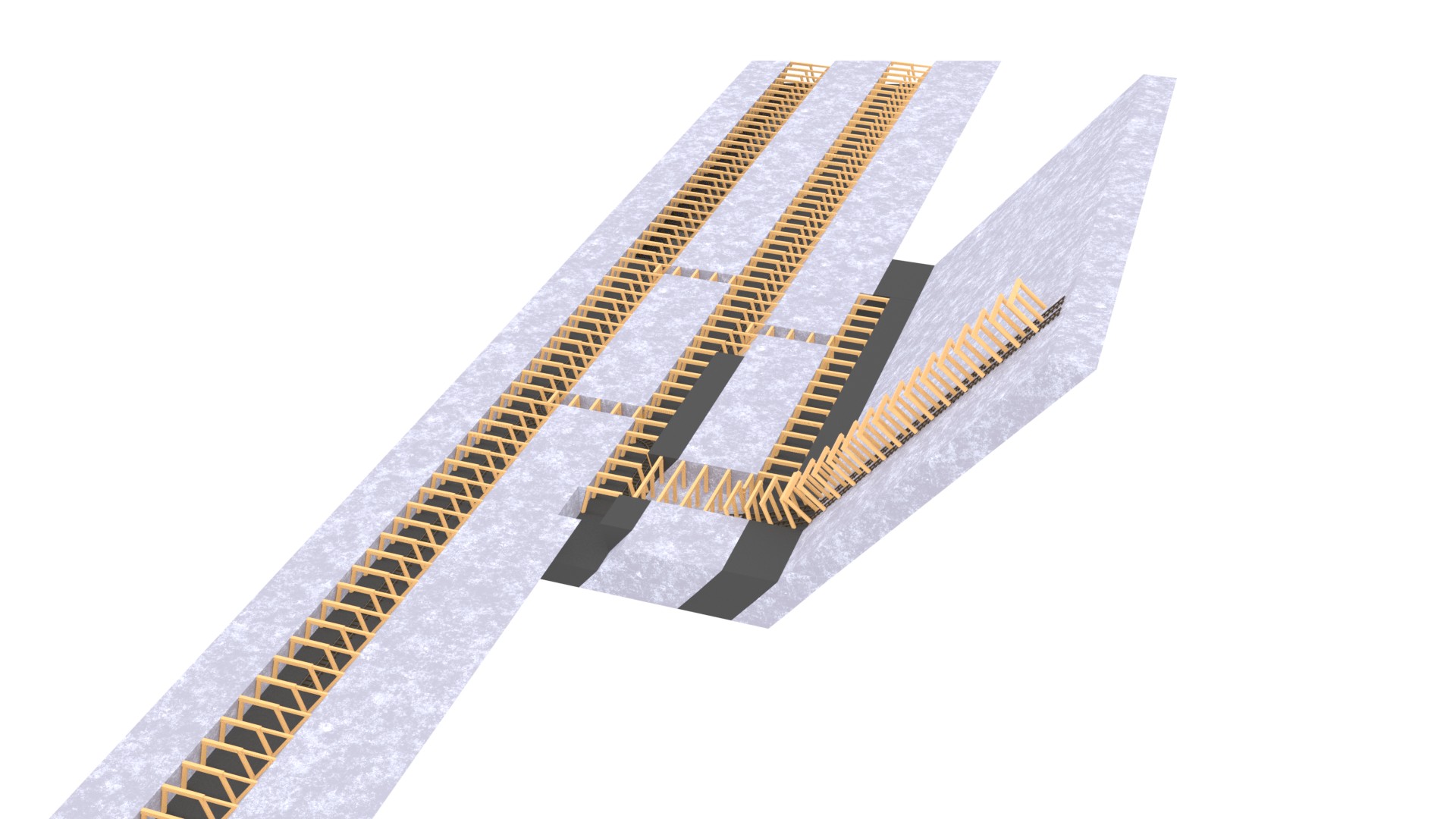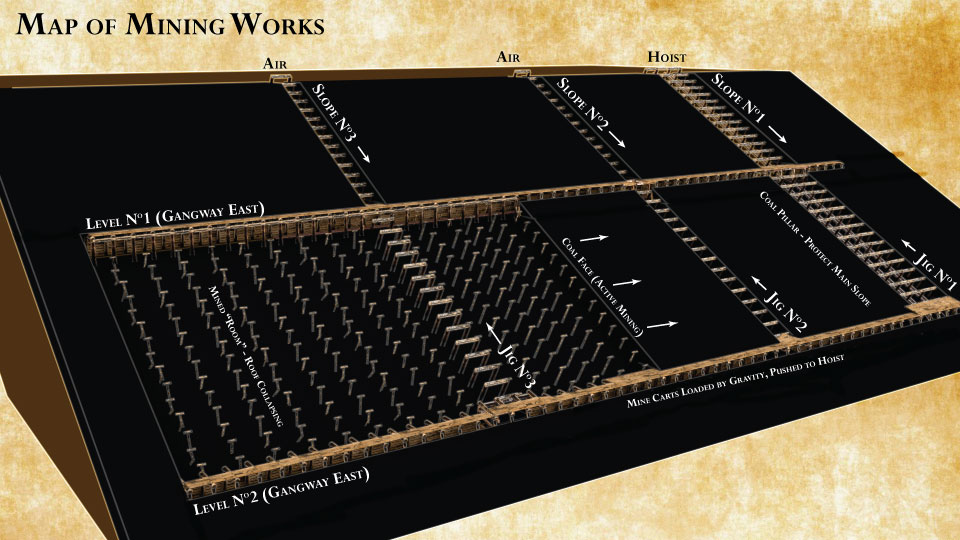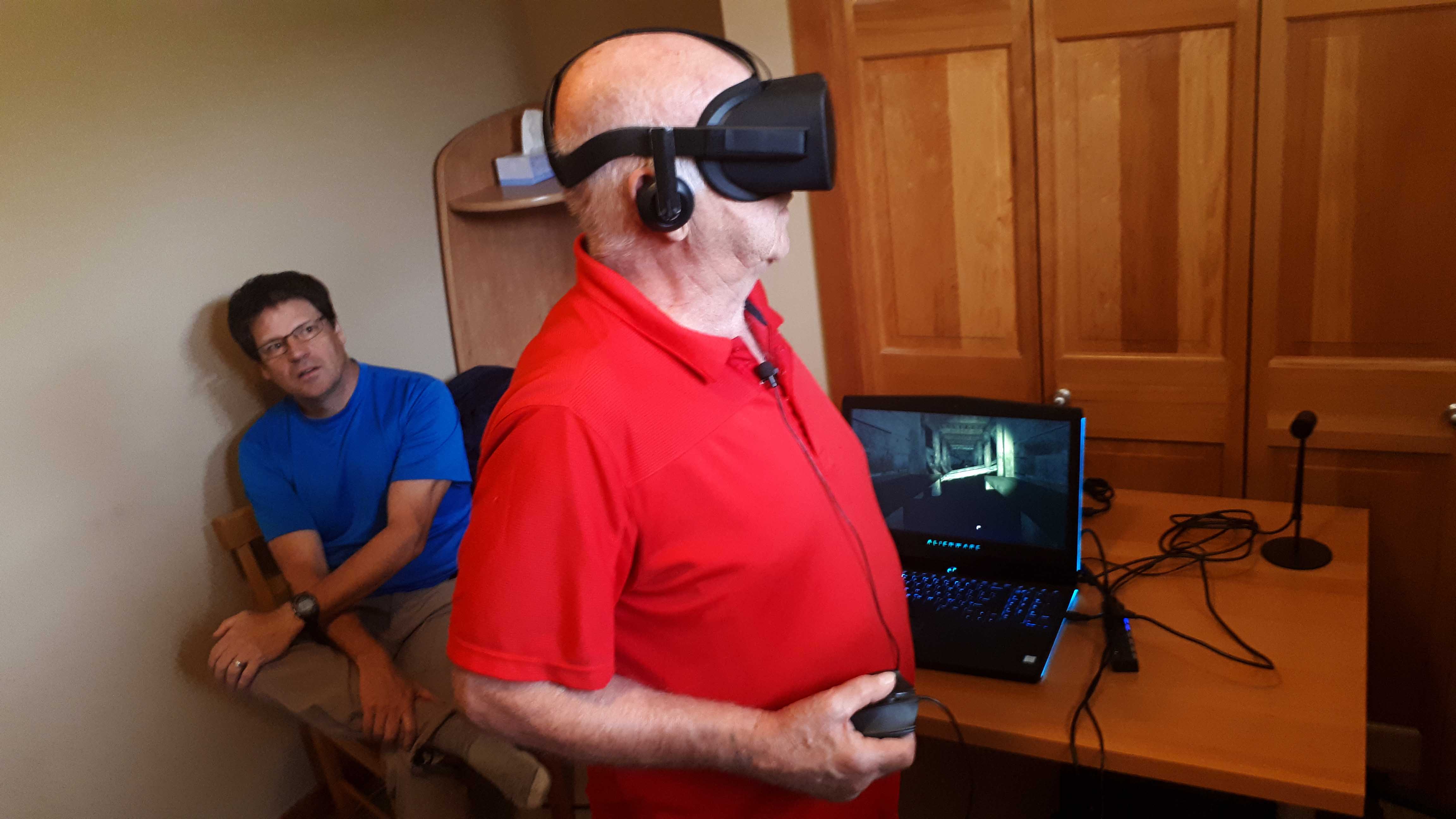Concept
Several concepts were tried, with each an improvement on the previous, as we built toward these criteria:
- There should be no start and stop, so that we do not need to have a complex interface and reset the mine tour for each user. Instead, we will create an endless loop so that people can enter and exit as they wish, with no delay. The acid-test for this would be to serve a group of high-school kids (10-20) all passing the headset around.
- The experience should run with as minimal staff presence and assistance as possible. Preferably none.
- The controls should be simple and intuitive so that no instruction is necessary before starting.
- The application needs to run all day, every day, without memory issues or need for restarting.
- As the mine is dark by nature, the audio (voices, ambient noise, location-specific sound effects, and exposition) needs to be paramount.
Here are some diagrams and early renders to show the progression:
 |
 |
 |
|
